The recent emergence of ChatGPT and other similar services such as Bing Search Chat, Midjourney, and Github Copilot in the past months has taken the world by storm. They managed to put the budding field of Generative AI squarely into the zeitgeist. Startups in the Generative AI space are raising big rounds and even larger valuations, culminating in OpenAI's recently announced $10bn investment at an estimated $29bn valuation. While the technology is undoubtedly going through a strong hype cycle, there are signs showing it is here to stay. It will further improve and support both creative and knowledge work. An AI company ourselves, Sentiance follows the evolution closely to understand how this technology can be used to serve our clients even better.
Generative AI
What is it?
First, let's take a closer look at the field of generative AI. Generative AI refers to a type of artificial intelligence that focuses on generating new original content. It could be in the form of music, artwork, or written material. This is accomplished through the use of algorithms that analyze existing data and then use that information to generate something new based on prompts by its users. These users typically undergo their own training period in learning to craft meaningful prompts to get the generative AI models to produce the expected content. New versions of models typically become more powerful in understanding user prompts, supporting broader content outputs, or improving their understanding of the content topic across prompts.
Its benefits
One of the main benefits of generative AI is that it can greatly increase productivity. For example, a software developer can use generative AI during coding to automate writing boilerplate code. They can also use it to more quickly iterate on ideas or to construct stronger test suites. At the moment, it is still prudent to validate the outputs of these models prior to use. Yet already in its current state, it can serve as a helpful assistant for such knowledge work.
However, there are also drawbacks to consider. The content generated by generative AI may not always be of high quality and can be difficult to control the results, i.e. the learning period for crafting prompts. Additionally, there is a risk that it may produce content that isn't suitable for certain audiences or violates copyright laws. Also, ethical concerns arise about potentially creating content that's harmful or misleading. Remember, a generative AI model is also bound by the data that was used to train it. Whether in its current state or in the foreseeable future, it would lack a true understanding of the person using it.
The added value of Sentiance
Attempting to build an AI that can interact with and understand humans is a lofty goal. Thankfully Sentiance helps bridge the gap between machine learning models and human understanding. Sentiance can create AI models that capture an individual's context and habits in the mobility, driving, and lifestyle domains. These insights are learned from processing smartphone sensor data and are updated in real-time to continuously reflect a person's context. As data is processed directly on the smartphone, sensitive data such as accurate locations don't need to leave the phone. This then provides the end users with a privacy-sensitive offering.
The integration of real-time contextual insights (as provided by Sentiance), with generative AI models (such as ChatGPT), holds the promise of truly personalized experiences.
1. For road safety and prevention
Let's say you recently received a couple of speeding tickets, or you responded to that text message and almost drove into the back of a truck! In short, you drive your car often and your driving behavior could do with some improvements.
ChatGPT can generate a coaching plan to help you become a better driver and prevent accidents. To truly become effective, crucial ingredients will be missing. An understanding of what kind of driver you are, what kind of drives you typically take, and under which conditions (weather, traffic, etc.) bring much more value. Having access to that level of driving insights can make a coaching campaign much more effective. It allows the program to adapt to an individual's specific situation and target the areas of driving that need attention, even as they change over time.
The right context
Expecting anyone to provide this level of context about their own driving would be unnecessarily time-consuming. It's also error-prone as people tend to over- or underestimate their capabilities. With Sentiance's Driving Insights, all necessary context can be provided to a generative AI for coaching in an automated and globally calibrated fashion. Additionally, the Engagement Platform provides a library of coaching building blocks (challenges, leaderboards, notifications, badges, etc.) that can be used to power a truly personalized coaching campaign with maximal efficiency.
Ultimately, this makes the driving experience safer for you and for others on the road.
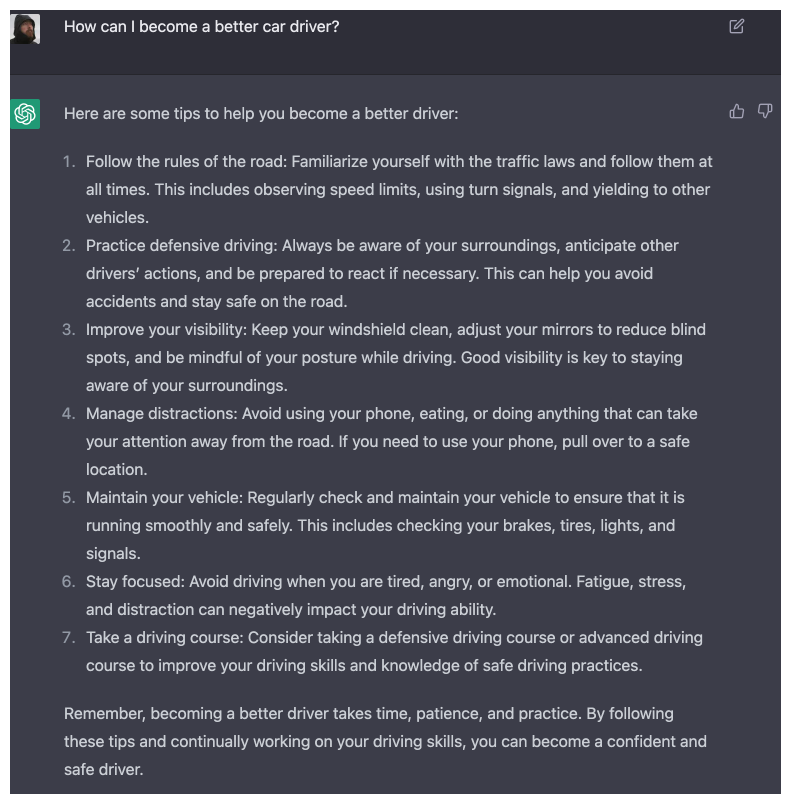
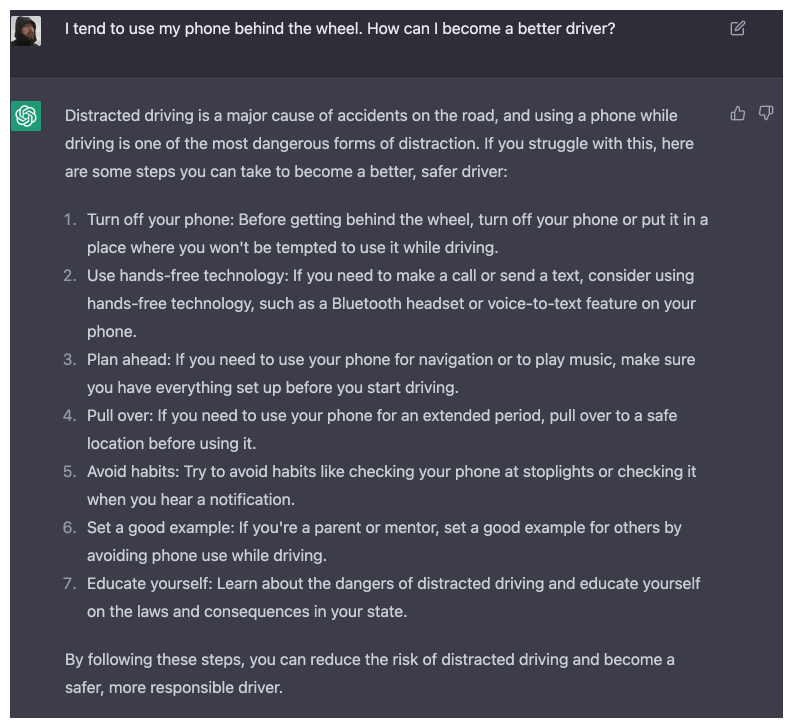
Figure 2 (right): More targeted safety tips once we add some knowledge about using the phone while driving.
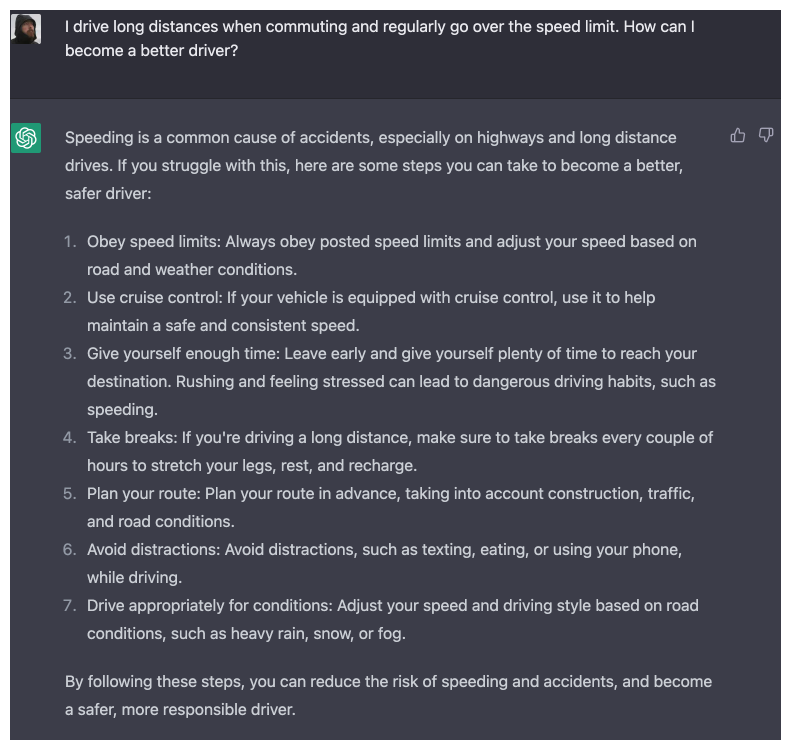
As you see in these figures, tips are a good starting point. Producing a truly compelling coaching experience though means the following:
- Understand the level of your driving expertise.
- Continuously monitor your progress.
- Adapt its interactions accordingly.
This requires the interface to be fully embedded into your life through a mobile app for example.
2. For sustainability
As the effects of climate change become more evident year after year, turning to ChatGPT for an environment-friendly and sustainable way of living is beneficial. It can help you summarize and better understand what has been published on the topic already. But to be truly effective, it needs to understand the effect you personally have on the environment. Only then can it guide your day-to-day choices.
Looking specifically at mobility, the modes of transport you take can have a large impact on sustainability. To consistently and accurately log your transports manually though, is not something people look forward to doing. They shouldn’t have to because the technology already exists. For example, fully determined directly on a user's smartphone, Sentiance's Mobility Insights are gathered. This avoids the need to send sensitive location data to a Cloud or other backend environment, keeping the overall solution privacy-sensitive for the end user.
3. For travel
As a final example, a use case that did its rounds on TikTok recently was using ChatGPT to generate an itinerary for a city trip. The way ChatGPT spits out a detailed day-by-day is impressive at first sight, but rather generic at a second glance. It requires a lot of additional prompting to tailor it. Technology such as Sentiance's Lifestyle Insights could easily provide a lot of additional information to provide a more personalized itinerary. Perhaps suggesting more or less walking because it now knows you are physically (un)fit. Or based on your interests and activities, a more culinary, cultural, or sportive trip. Overall, these Lifestyle Insights make sure the itinerary is based on your interests and lifestyle, rather than a one-size-fits-all itinerary. Who wants to feel like a bland tourist?
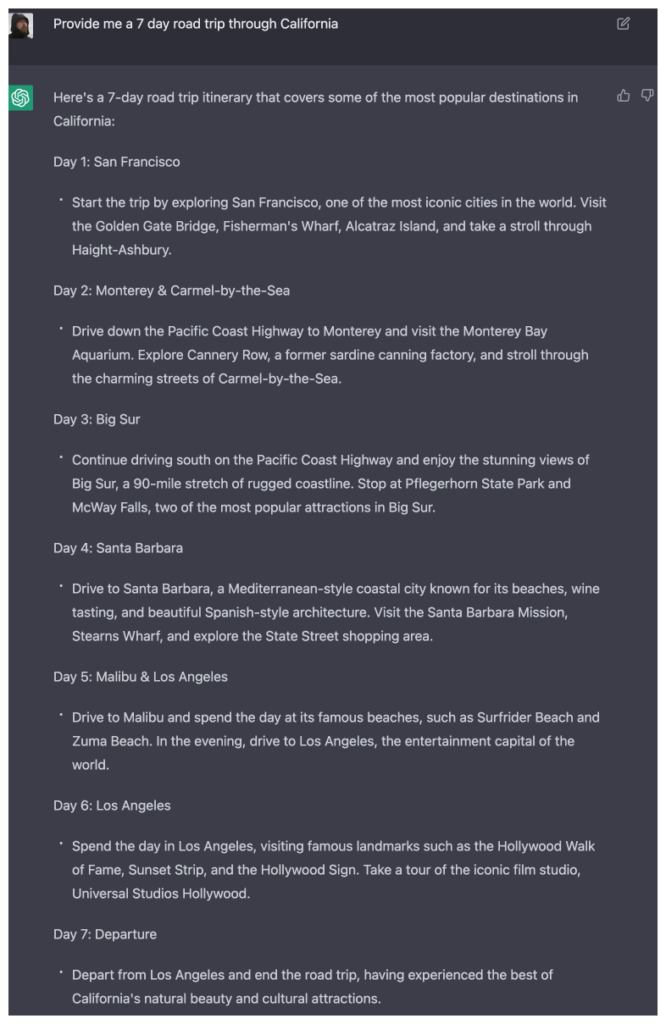
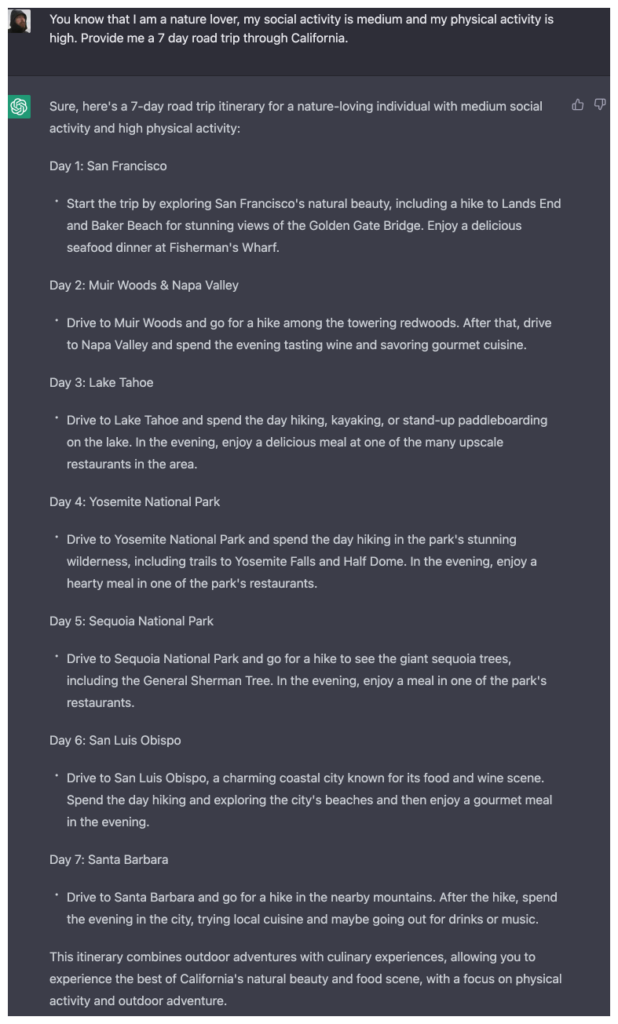
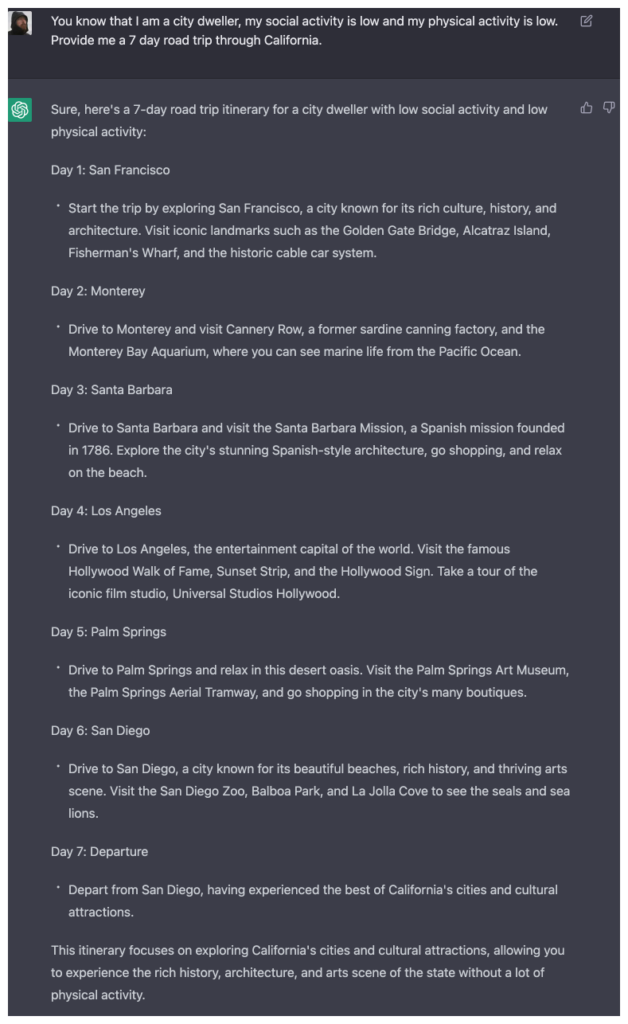
Figure 5 (center): If you like to spend time in nature, this itinerary will likely be much more to your liking.
Figure 6 (right): If you usually never spend time in nature, then you will likely resonate with this itinerary instead.
If ChatGPT could know your lifestyle from the very beginning, then you don't have to waste time building a solid baseline. Instead, spend more time on the content of the trip.
We can go on with many other examples, but I think you get the point. All of the additional insights that were used in these examples already roll out of the Sentiance Platform, in a privacy-sensitive way!
The need for personalization in generative AI
Even with the recent leaps forward for generative AI, it still feels like we are only scratching the surface. The possibilities are endless as these models continue to evolve. Regardless, even as this technology matures, we strongly believe the need for more context and personal experiences will materialize fast. Generative AI will find this a challenging bar to cross on its own. Promisingly, the integration with other AI models and systems such as those provided by Sentiance will allow new services to emerge and fulfill exactly that need. We can’t wait to take part in it.
Disclaimer: ChatGPT was used in writing part of this blog post 🙂


